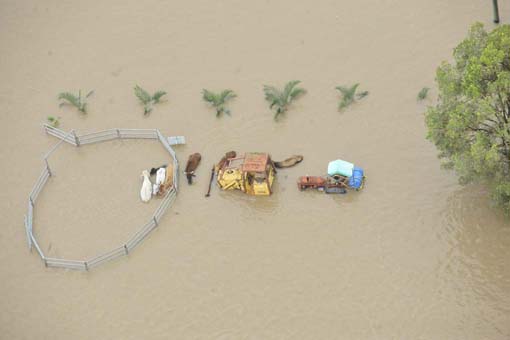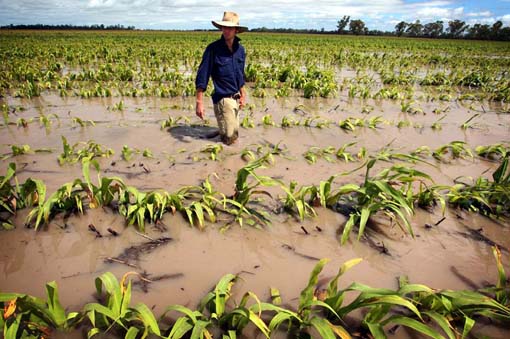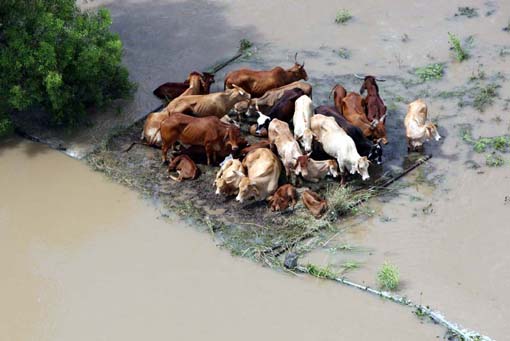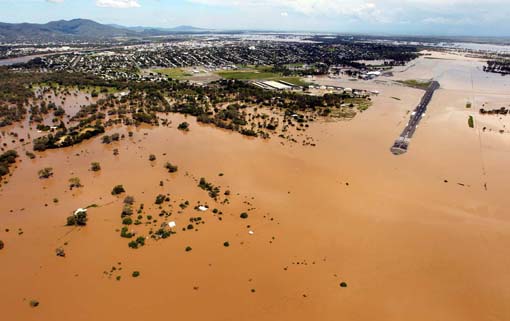Crops destroyed as Queensland swamped by floods
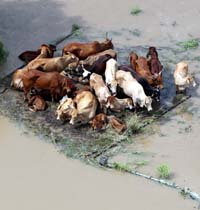
Fifteen people are confirmed dead and about 51 are missing, while one-third of the Australian state of Queensland has been declared a disaster zone following floods which have caused destruction across the area.
Flood waters have inundated the state capital Brisbane, with emergency services and the state government saying these floods are among the worst of the last 100 years, with more than 100,000 homes affected.
North-west of Brisbane the city of Toowoomba was hit by an “inland tsunami”, with flash flooding tearing along the high street, while other nearby towns such as Dalby, Grantham and Chinchilla experienced record flooding.
Farmers expected losses from the floods to top $1.5billion (£948m), with many still unable to survey the extent of damage to their properties.
Brent Finlay, president of Queensland farmers organisation AgForce, told Farmers Weekly 30 per cent of summer sorghum and corn crops and up to 40 per cent of winter grain crops have been destroyed by flooding. The combination of rains and cool weather has also prevented many people from harvesting their winter crops, which would normally be completed by the end of November.
“Some people have lost 10,000 ha (24,710 acres) of wheat, and they haven’t even started to harvest their headers. We’re hearing of individual losses of up to AUD$4m (£2.5m) worth of grain and losses in cotton areas to the tune of AUD$1-2m (£629,000-1.2m) in irrigation infrastructure,” Mr Finlay said.
“Almost AUD$2m (£1.2m) worth of cotton crops have been forward-sold, and they won’t even see any harvested. A lot of it is just too early to know, people haven’t been out to see what damage has been done.”
Machinery and infrastructure have also been hit, with full grain silos toppling over as their foundations are subsided by floodwaters. Tractors and other machinery have also been swamped. “A number of my members told me the only dirt they had above water was on top of the tractor wheels.”
Mr Finlay said there were some individual losses of livestock, but most escaped unscathed because a good season left animals in good condition and farmers acted quickly on warnings following disastrous losses of cattle and sheep in 2008.
The vice-president of the Cane Growers Association of Queensland, Paul Schembri, also told Queensland Country Life sugar cane farmers will be unable to reap the benefits of high prices, with most of their crops wiped out by recent rains and other rains in November.
The outlook for this year’s crop is no better, with Canegrowers reporting farmers around the key sugar cane growing region of Bundaberg estimate they have lost up to 50% of their 2011 crop already.
From Bundaberg on the central coast, down through to the fertile Darling Downs and Lockyer Valley in the south-east of the state, floodwaters also destroyed fruit and vegetable crops before they could be harvested.
The state and federal goverments are both providing assistance to farmers in Queensland affected by the floods, with grants of up to AUD$25,000 (£15,738) available to those living in affected areas.
Mr Finlay was quick to point out this is only the beginning of the wet season in Queensland, which typically runs from November to April, and meteorologists have predicted several more cyclones for the region over coming months.
As Farmers Weekly went to press rain was falling in isolated regions across the state with experts predicting more rainfall and rivers to remain above their banks inland while in Brisbane river levels were expected to peak at near historic levels on Thursday.
To dontate to relief efforts contact AgForce (www.agforceqld.org.au) or dontate to the Queensland Government Appeal at www.qld.gov.au/floods/donate.html
